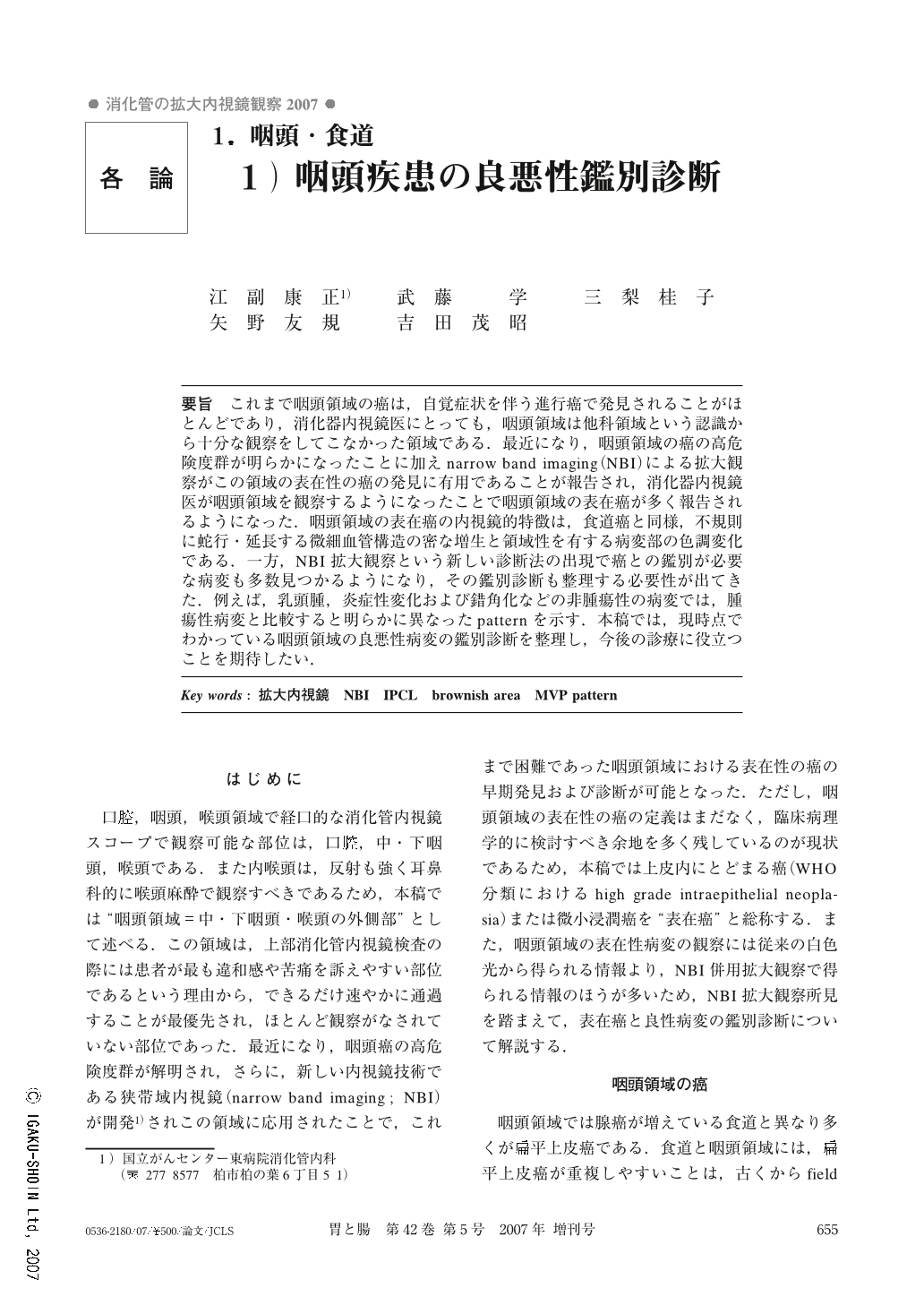Japanese
English
- 有料閲覧
- Abstract 文献概要
- 1ページ目 Look Inside
- 参考文献 Reference
要旨 これまで咽頭領域の癌は,自覚症状を伴う進行癌で発見されることがほとんどであり,消化器内視鏡医にとっても,咽頭領域は他科領域という認識から十分な観察をしてこなかった領域である.最近になり,咽頭領域の癌の高危険度群が明らかになったことに加えnarrow band imaging(NBI)による拡大観察がこの領域の表在性の癌の発見に有用であることが報告され,消化器内視鏡医が咽頭領域を観察するようになったことで咽頭領域の表在癌が多く報告されるようになった.咽頭領域の表在癌の内視鏡的特徴は,食道癌と同様,不規則に蛇行・延長する微細血管構造の密な増生と領域性を有する病変部の色調変化である.一方,NBI拡大観察という新しい診断法の出現で癌との鑑別が必要な病変も多数見つかるようになり,その鑑別診断も整理する必要性が出てきた.例えば,乳頭腫,炎症性変化および錯角化などの非腫瘍性の病変では,腫瘍性病変と比較すると明らかに異なったpatternを示す.本稿では,現時点でわかっている咽頭領域の良悪性病変の鑑別診断を整理し,今後の診療に役立つことを期待したい.
Most patients with squamous cell carcinoma in the oropharynx and hypopharynx had been diagnosed at the advanced stage with various symptoms. Recent studies have revealed the characteristics of patients at high risk for oropharyngeal or hypopharyngeal squamous cell carcinoma, and the groundbreaking innovation of technology for magnifying endoscopy and narrow band imaging (NBI), enables us to detect them at an early stage. Endoscopic typical findings of superficial carcinoma in the oropharynx and hypopharynx detected by NBI combined with magnifying endoscopy are a clearly demarcated brownish area and irregularly elongated intra-epithelial papillary capillary loop (IPCL). The benign superficial lesions in the oropharynx and hypopharynx, such as papilloma, inflammatory change, acanthosis and melanosis don't show these endoscopic findings. We have to become familiar with the endoscopic diagnostics of oropharyngeal or hypopharyngeal lesions and must make efforts to improve the precision of endoscopic diagnosis.

Copyright © 2007, Igaku-Shoin Ltd. All rights reserved.


